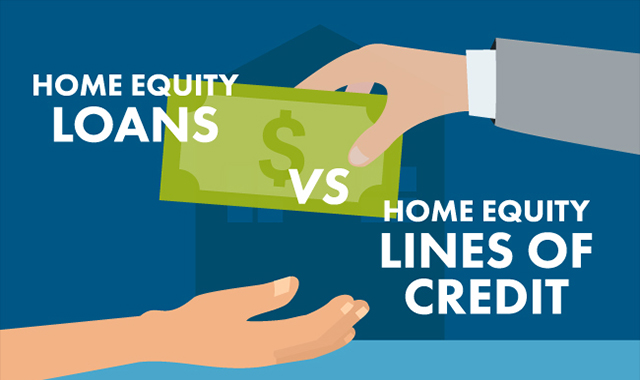Upsides and Downsides of Using Equity Release Mortgages in Retirement
Upsides and Downsides of Using Equity Release Mortgages in Retirement
Blog Article
Discovering the Various Kinds Of Equity Release Mortgages Available Today
Equity Release home mortgages present numerous alternatives for property owners aged 55 and over. equity release mortgages. These financial items accommodate different needs and choices, permitting people to access funds from their residential or commercial property. From lifetime home loans to common gratitude mortgages, each type provides unique advantages. Comprehending these options is important for making notified decisions. What factors should one think about when selecting the most ideal equity Release strategy? The information that comply with may clarify this essential topic
Comprehending Equity Release Mortgages
Equity Release mortgages give home owners, generally those aged 55 and over, with a method to access the value linked up in their residential property without requiring to offer it. This economic alternative enables individuals to transform a part of their home equity right into cash, which can be used for different functions, such as home renovations, settling financial obligations, or funding retirement.Equity Release can take various types, but it fundamentally involves borrowing against the value of the home while maintaining ownership. Homeowners can choose to obtain a round figure or a collection of smaller sized settlements, depending upon their monetary demands and preferences.Additionally, the quantity available for Release is affected by the residential property's value, the homeowner's age, and particular loan provider requirements. On the whole, understanding equity Release mortgages is essential for property owners to make educated choices concerning tapping into their home's equity while thinking about the lasting effects.
Life time Mortgages
Lifetime mortgages represent one of the most prominent types of equity Release. This monetary product allows house owners, commonly aged 55 or older, to obtain versus the value of their residential or commercial property while keeping ownership. The funding, which is protected versus the home, builds up rate of interest gradually yet does not call for month-to-month payments. Instead, the car loan and accumulated passion are paid back when the homeowner dies or relocates into long-lasting care.Lifetime home mortgages provide flexibility, as borrowers can pick to get a swelling sum or go with a drawdown center, accessing funds as needed. Significantly, lots of plans come with a no-negative-equity warranty, guaranteeing that debtors will never ever owe greater than the worth of their home. This attribute supplies satisfaction, enabling individuals to enjoy their retirement without the concern of depleting their estate. Overall, lifetime mortgages work as a practical option for those looking for monetary assistance in later life.
Home Reversion Plans

Drawdown Life Time Mortgages
While numerous house owners look for ways to access their riches, drawdown lifetime mortgages provide an adaptable alternative that permits individuals to Release funds progressively. This type of equity Release mortgage allows home owners to obtain against the value of their residential property while keeping ownership. Unlike traditional life time home loans, drawdown strategies enable debtors to access a part of their equity upfront and take out added funds as required, approximately a fixed limit.This attribute can be particularly helpful for those who desire to manage their funds thoroughly, as it decreases rate of interest build-up by just billing interest on the amounts drawn. In addition, drawdown life time home loans frequently include a "no negative equity assurance," making certain that debtors will never owe greater than their home's value. This option matches senior citizens that prefer economic safety and adaptability, permitting them to meet unexpected costs or maintain their lifestyle without having to sell their property.
Boosted Life Time Mortgages
Boosted Life time Home mortgages use distinctive advantages for eligible home owners looking for to Release equity from their buildings. Understanding the qualification standards is essential, as it determines who can gain from these specialized financings. It is also essential to assess the prospective disadvantages connected with boosted alternatives, making certain a well-shaped viewpoint on their usage.
Qualification Standards Described
Comprehending the eligibility requirements for Improved Lifetime Mortgages is important for potential applicants seeking to access the equity in their homes. Typically, candidates need to be aged 55 or older, as this age demand is conventional in the equity Release market. Homeowners should have a building valued at a minimum threshold, which can vary by lending institution. Notably, the residential or commercial property should be their main residence and in great problem. Lenders typically assess the home owner's health and wellness status, as specific health conditions might enhance eligibility and benefits. In addition, applicants must not have existing substantial financial debts secured versus the residential property. Meeting these requirements allows individuals to explore Improved Life time Mortgages as a sensible choice for accessing funds linked up in their homes.
Benefits of Improved Home Mortgages
After clearing up the qualification requirements, it comes to be noticeable that Improved Life time Mortgages use numerous significant advantages for home owners wanting to take advantage of their property equity. Primarily, they offer accessibility to a bigger lending amount compared to standard lifetime mortgages, benefiting those with health and wellness problems or age-related elements that enhance their life span danger. This improved borrowing capability enables home owners to fulfill numerous financial needs, such as home enhancements or retirement expenses. Additionally, these home loans commonly feature flexible repayment alternatives, allowing consumers to handle their funds extra properly. The no-negative-equity warranty better assures that home owners will never owe even more than their home's value, offering tranquility of mind. On The Whole, Enhanced Lifetime Home mortgages provide a compelling alternative for eligible property owners looking for monetary services.
Possible Disadvantages Thought About
While Improved Lifetime Home loans supply countless advantages, prospective drawbacks require careful factor to consider. One significant issue is the effect on inheritance; the equity released minimizes the value of the estate delegated beneficiaries. Furthermore, these mortgages can accumulate significant rate of interest over time, leading to a significant financial debt that may go beyond the original loan quantity. There might likewise be constraints on property adjustments or rental, restricting homeowners' versatility. Enhanced products commonly need details health conditions, indicating not all home owners will certainly certify. Lastly, taking care of the costs and costs connected with these home loans can be complicated, possibly causing unforeseen prices. Therefore, individuals must extensively assess their situation and get in touch with monetary experts prior to proceeding.
Shared Admiration Mortgages
Shared Recognition Mortgages stand for an one-of-a-kind economic setup that enables house owners to access equity while sharing future building value enhances with the lender. This technique uses possible benefits such as lowered monthly settlements, yet it likewise includes drawbacks that must be meticulously taken into consideration. Comprehending the eligibility needs is crucial for those interested in this option.
Idea Overview
Equity Release home loans, particularly in the type of shared admiration mortgages, use house owners an one-of-a-kind economic option that permits them to gain access to funds by leveraging the worth of their building. In this plan, a loan provider gives a financing to the home owner, which is commonly paid off via a share of the residential or commercial property's future gratitude in worth. This indicates that when the home owner markets the residential property or dies, the loan provider gets a percent of the increased worth, rather than simply the preliminary car loan amount. Shared appreciation home loans can be appealing for those wanting to supplement their revenue or finance considerable costs while maintaining ownership of their home. Nevertheless, the monetary implications of common recognition must be very carefully considered by prospective customers.
Drawbacks and advantages
Common recognition mortgages can give significant economic benefits, they also come with significant drawbacks that potential debtors ought to consider. These home mortgages allow home owners to gain access to equity in their buildings while sharing a part of any type of future gratitude with the lender. This plan can be advantageous throughout times of climbing residential or commercial property worths, providing significant funds without monthly repayments. Nevertheless, the main disadvantage is the possible loss of equity; homeowners may finish up with substantially reduced inheritance for beneficiaries. Furthermore, the intricacy of the terms can lead to misunderstandings regarding settlement commitments and the percentage of admiration owed. For that reason, it is important for customers to evaluate these variables carefully before devoting to a common admiration home mortgage.
Qualification Requirements
What criteria must homeowners meet to certify for a shared gratitude mortgage? Primarily, prospects need to be at the very least 55 years of ages, guaranteeing they are within the target demographic for the original source equity Release products. Additionally, the home should be their primary house and normally valued above a specified minimum threshold, often around ? 100,000. Lenders additionally analyze the property owner's monetary situations, including earnings and arrearages, to determine they can take care of the home loan responsibly. Significantly, the residential property needs to remain in great problem and without significant lawful encumbrances. Property owners need to likewise have a clear understanding of the terms, consisting of how gratitude will certainly be shown the loan provider upon sale or transfer of the building, as this impacts total returns.
Choosing the Right Equity Release Alternative

Often Asked Inquiries
What Age Do I Required to Be for Equity Release?
The age need for equity Release typically begins at 55 for the majority of strategies. Some suppliers may offer options for those aged 60 and above, mirroring varying terms based on specific conditions and lender plans.
Will Equity Release Influence My Inheritance?
Equity Release can impact inheritance, as the quantity borrowed plus passion lowers the estate's value. Beneficiaries might receive much less than prepared for, depending upon the residential property's appreciation and the overall financial debt at the time of passing.
Can I Relocate House With Equity Release?
The inquiry of moving home with equity Release emerges regularly. Typically, people can move their equity Release strategy to a brand-new home, however certain conditions may apply, requiring examination with the lending institution for advice.
Exist Costs Related To Equity Release Mortgages?
Charges connected with equity Release home mortgages can consist of setup costs, assessment fees, and legal expenses. In addition, there might be very early payment costs, which can influence the general expense and monetary ramifications for the debtor.
How Does Equity Release Impact My Tax Scenario?
Equity Release can influence one's tax obligation circumstance by potentially enhancing gross income, as released funds are taken into consideration funding. However, it usually does not incur instant tax obligation responsibilities, making it vital to seek advice from a financial expert for personalized guidance.
Final thought
In recap, the selection of equity Release home loans readily available today provides home owners aged 55 and over multiple pathways to access their residential or commercial property's value - equity release mortgages. Whether selecting a life time mortgage, home reversion plan, or other options, each alternative offers distinct benefits tailored to individual monetary requirements. Cautious factor to consider and appointment with a financial advisor are important to assure the picked equity Release option straightens with economic conditions and personal objectives, inevitably promoting educated decision-making for a safe and secure economic future. Equity Release home loans present different alternatives for home owners aged 55 and over. Equity Release mortgages provide homeowners, generally those aged 55 and over, with a means to access the worth linked up in their home without needing Get More Information to sell it. Boosted Life time Mortgages offer distinctive benefits for eligible homeowners looking for to Release equity from their residential or commercial properties. Equity Release home mortgages, particularly in the form of common gratitude home mortgages, provide homeowners an one-of-a-kind monetary service that permits them to accessibility funds by leveraging the worth of their residential or commercial property. In recap, the range of equity Release home loans available today supplies property owners aged 55 and over multiple paths to access their residential property's value
Report this page